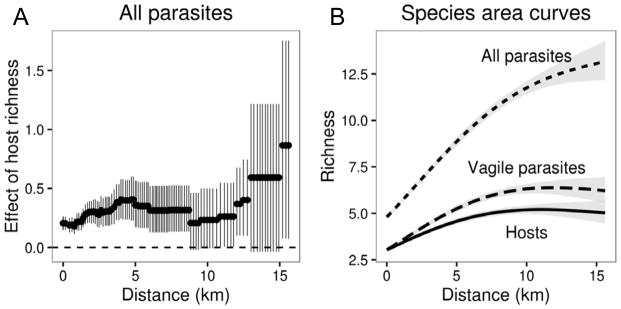Figure 5.
Influence of spatial grain and neighborhood size on the relationship between host and parasite diversity. (A) Increases in neighborhood size tended to non-linearly increase the coefficient of the relationship between host and parasite richness; error bars represent the 95% CI of the estimate, for which sampling was done without replacement (i.e., sample size decreases as spatial grain is increased). (B) Species–area curves for hosts, highly vagile parasites (e.g., larval trematodes that have avian and mammalian definitive hosts, Table S1), and all parasites as a nested function of buffer distance.

